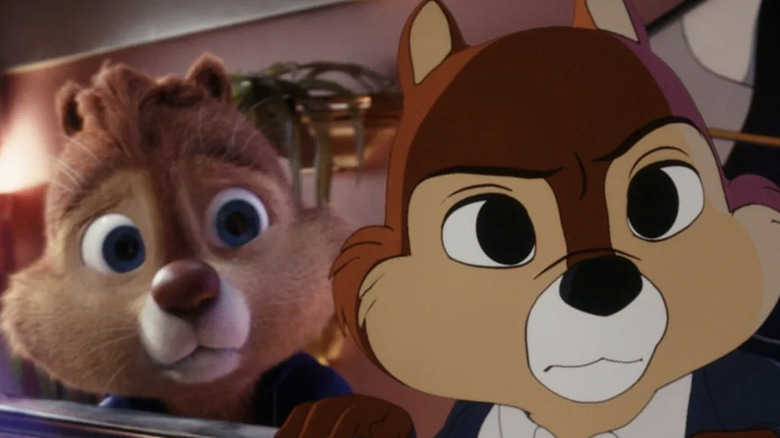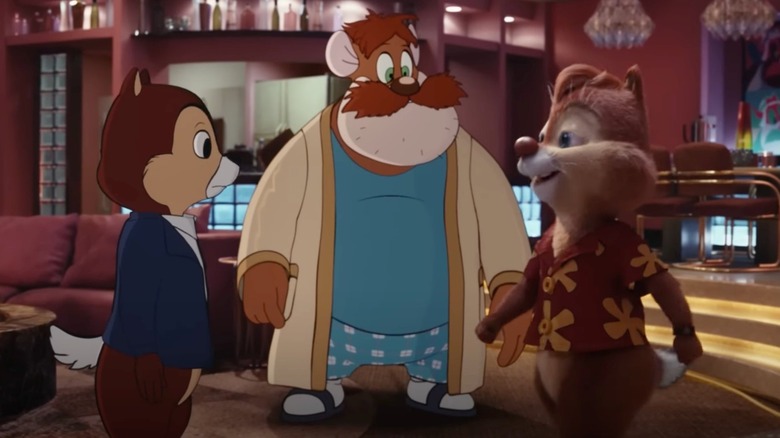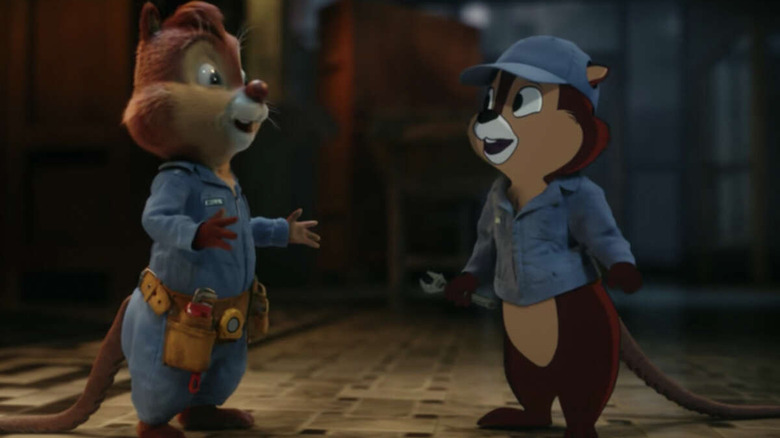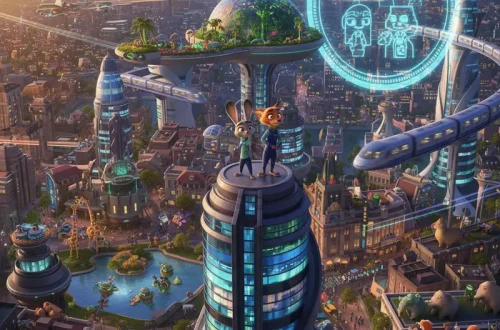
“Chip ‘N Dale: Rescue Rangers Review: Fails to Deliver Genuine Laughter”
In the realm of comedy films, there are three distinct categories: the duds, the nose breathers, and the laugh-out-louds. Unfortunately, “Chip ‘n Dale: Rescue Rangers” falls into the second category, failing to generate genuine laughter throughout its runtime. While the movie does offer moments that may elicit a bemused exhale, it never quite reaches the level of delivering tangible, side-splitting humor.
The film serves as a reminder of the missed opportunity for a sequel to the beloved “Who Framed Roger Rabbit?” At its best, “Chip ‘n Dale: Rescue Rangers” captures the essence of that iconic film, but at its worst, it highlights why a sequel was never made. While the movie features cameo appearances from various animation franchises, spanning different studios, these moments serve more as distractions than meaningful contributions to the story.
The plot of the film is a mishmash of elements borrowed from the likes of “Who Framed Roger Rabbit?,” “BoJack Horseman,” “Lego Movie,” “Wreck-It Ralph,” “Space Jam: A New Legacy,” and “Ready Player One.” It follows the journey of Chip (voiced by John Mulaney) and Dale (voiced by Andy Samberg), two former actor/writers who found success in the 1989-1990 animated series “Rescue Rangers.” Their friendship was eventually strained by Dale’s inflated ego and Chip’s resentment towards him.

Fast forward to the present day, where humans and toons coexist in a “Roger Rabbit”-esque world. Dale clings to his fading acting aspirations, resorting to cosmetic surgery, while Chip leads a mundane 9-to-5 life. The two estranged friends are reunited when their old companion, Monterey Jack (voiced by Eric Bana), goes missing. Jack, who was a prominent character in their ’80s series, has developed a costly addiction to black market cheese. This sets off a chain of events that forces Chip and Dale to team up with Captain Putty (voiced by JK Simmons), a Gumby-like police officer, and Ellie Whitfield (voiced by KiKi Layne), a human detective and devoted “Rescue Rangers” fan.
Unfortunately, the film’s plot falls flat, with a thin mystery and a predictable storyline of Chip and Dale reconciling their differences. The humor feels forced, relying on clichéd gags and contrived situations. At times, the film incorporates scenes where characters miraculously escape danger by revealing an object of symbolic meaning, such as a badge, flask, Bible, or coin, which conveniently halts a bullet and imparts profound character insights.
Despite its narrative shortcomings, the film dedicates a significant amount of screen time to cramming as many animated characters as possible into each frame. The visual spectacle begins with ambiguous characters resembling Transformers, Pokémon trainers, and extras reminiscent of “The Simpsons.” As the movie progresses, the cameos become more specific, including appearances from MC Skat Cat dancing with Paula Abdul, Mr. Natural from Robert Crumb’s comics, and a bus bench suggesting that Butt-Head is now a US Senator. While these moments may evoke a mild sense of amusement, none of them come close to capturing the comedic brilliance of classic dueling pianos between Daffy Duck and Donald Duck.

Nevertheless, the film’s blend of humans and toon hybrids provides some of its most enjoyable comedic moments. The portrayal of Peter Pan (voiced by Will Arnett), now grown-up and overweight, adopting the alias “Sweet Pete” as a nefarious character, and Seth Rogen voicing “Bob the Warrior Viking” from the Uncanny Valley, where hyper-realistic CG characters roam, offer laughs. Rogen’s other voiceover cartoon characters make appearances, leading to an eruption of his signature laugh. However, the standout and unsettling character of the film is “Ugly Sonic,” a former convention regular whose negative reception on social media, coupled with his unsettling human teeth, led to his removal from a franchise. While entertaining, it’s best not to encounter “Ugly Sonic” again in future projects.
Amidst the chaotic references to characters like Baloo and He-Man’s aversion to pants, there is an underlying plot involving double-crosses that continuously thwart Chip and Dale’s plans. However, the identity of the traitor remains predictable, and the film’s attempts to misdirect the audience lack subtlety. One can’t help but yearn for a surprise appearance by Snagglepuss, Disco Stu, or a crossover with Rick and Morty in a Jetsons flying car. To its credit, the film does create an atmosphere where such unexpected events seem plausible at any moment.
One of the film’s glaring weaknesses, apart from its lackluster plot, lies in the voice work by its lead actors. Andy Samberg brings his signature style, which may delight his fans, but John Mulaney’s performance falls flat. Mulaney’s portrayal of Chip, as a bundle of insecurities and pessimism, dampens the overall energy of the film. While Chip is intended to be the straight man in the duo, Mulaney’s delivery lacks the comedic charm exhibited by legendary performers like Charles Grodin, Jason Bateman, or Bob Hoskins in his iconic role alongside Roger Rabbit. It begs the question of whether Chip was always this bland and unremarkable in the original “Rescue Rangers” series.
When the smoke clears and the initial excitement of spotting Stan’s dad from “South Park” dissipates, “Chip ‘n Dale: Rescue Rangers” leaves viewers with a sense of appreciation for its ambitious scope, admiration for the legal hurdles cleared to include various animated characters, and a faint echo of jokes that tickle the senses but fail to leave a lasting impact of laughter.
We bring out some of the most well-known Disney collection, all of which are available at reasonable costs. Visit our link now if you are interested in the Disney collection


Mickey Mouse, Minnie Mouse, Donald Duck, Goofy, Pluto
